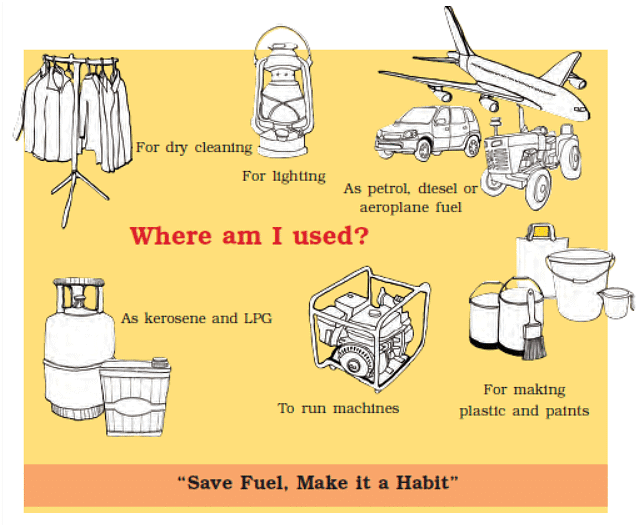NCERT Solutions for Class 5 EVS Chapter 12 - What if it Finishes?
Look At the Picture and Write
1. What are the different kinds of vehicles that you can see?
Ans. I can see vehicles like cars, buses, autorickshaws, motorcycles, cycles etc.
2. What do you think they need as fuel?
Ans. Cars, buses and motorcycles need petrol, diesel or CNG while cycles do not need any such fuels.
3. Which of the vehicles do you think give off smoke?
Ans. Vehicles like cars, buses, scooters, and Auto rickshaws give out smoke.
4. Which are the vehicles that run without petrol and diesel?
Ans. The cycle can run without petrol and diesel.
5. What problems do we face from speeding vehicles?
Ans. It may cause accidents.
Tell
1. Do you ride a bicycle? If yes, where do you go on it?
Ans. Yes, I ride a bicycle, I go to my school, playground, the market, and to meet my friends using it.
2. How do you come to school?
Ans. I come to school by school bus or by my cycle.
3. How do your family members go to work from home?
Ans. My father uses a car, my mother goes by metro rail while my uncle goes by motorcycle.
4. What problems can we have from smoke coming out of vehicles?
Ans. We can have problems like coughing, nausea, headache and diseases related to the lungs from smoke coming out of vehicles.
5. What kind of problems can we face from the noise of vehicles (honking)?
Ans. Noise coming from vehicles cause headache and irritation.
Find out and discuss
1. Which states of India have oil fields?
Ans. In India, oil fields are in Assam, Gujarat and the coastal areas of Maharashtra and Andhra Pradesh.
2. Besides oil, what else is found deep inside the earth?
Ans. Besides oil, many minerals are found deep inside the earth such as coal, gold, iron, copper, diamond, potassium, magnesium and zinc.
Write
1. What all can vehicles run on?
Ans. Vehicles can run on petrol, diesel, CNG, LPG, battery and solar energy.

2. What kind of problems will we face, if the number of vehicles keeps on increasing? For example, more traffic on the road. Talk to your elders and write about it.
Ans. If the number of vehicles keep on increasing it would lead to many problems like increased traffic on the road, air pollution, noise pollution and accidents.
3. Manju said, “why doesn’t everyone use a bus?” What do you think, why don’t people travel by bus?
Ans. I think poor people prefer bicycles to spend their money on buses while the rich ones use cars for convenience and also to maintain their social status.
4. Suggest some ways to deal with the problems arising out of the growing number of vehicles.
Ans. To control the growing number of vehicles people should prefer public transport systems like buses, trains, metro train etc. This problem can also be effectively dealt with by making carpool i.e. sharing one’s car with colleagues, other people etc.
5. What are the benefits, if we switch off the engine of the vehicles at the red light on the road?
Ans. It will save fuel if we switch off the engine of the vehicles at the red light on the road.
Find out and Write

Ans.

The rates of petrol are different in each city. The rates of petrol and diesel in Delhi are given here. Look at the table and answer the questions.

1. In 2014, as compared to 2007 the rate of petrol went up by ———rupees. The rate of diesel increased by ————rupees.
Ans. In 2014, as compared to 2007 the rate of petrol went up by 23.34 rupees. The rate of diesel increased by 28.49 rupees.
2. What was the difference in the rates of petrol and diesel from 2002 to 2007 and 2007 to 2014?
Ans. The difference in the rates of petrol from 2002 to 2007 is 13.61 rupees and diesel is 11.57 rupees. The difference in the rates of petrol from 2007 to 2014 is 23.34 rupees and diesel is 28.49 rupees.
Find Out
1 What is the price of petrol and diesel in your area?
Ans. The price of petrol in my area is ₹ 74.46 per litre and the price of diesel is ₹ 66.84
2. Why are the prices of petrol and diesel going up?
Ans. The prices of petrol and diesel are going up because their production is limited while consumption is increasing day by day.
3. In one month how much petrol and diesel is used in your home? What is it used for?
Ans. In our home, about 100 litres of petrol and 10 litres of diesel are used on conveyance and generator.
See the Poster and Write
1. What oil is used for?
Ans. Oil is used as fuel for vehicles, cooking food, lighting, drying, cleaning, running machines and making plastic and paints.
2. Where is diesel used? Find out.
Ans. Diesel is used to running cars, buses, trucks, tractors, trains and generators. Besides, it is also used to run machines in factories.
Think and Discuss
1. What would happen if you don’t get petrol or diesel for a week in your village or town?
Ans. If we don’t get petrol or diesel for a week in our area, life will come to a standstill as the crisis would badly affect the transport system. Machines used in factories and agricultural work will also become non-functional. We will not be able to get electricity from generators either. In other words, life will be messed up.
2. Suggest some ways to save oil.
Ans. The following measures could be taken to save oil:
(i) In place of using personal vehicles, we should use public transport system like buses, trains or metro trains etc.
(ii) We should prefer walking on foot or using a bicycle.
(iii) We should keep our vehicles switched off on red lights.
(iv) We should utilize solar energy for different purposes.
Discuss
1. Have you ever collected dry wool or made cow dung cakes? How are they made?
Ans. Yes, once I collected dry wood and also made cow dung cakes. To make cow dung cakes, balls of cow dung are made and then these are flattened to make round and flat surfaces. After that, these are dried up in the sun.
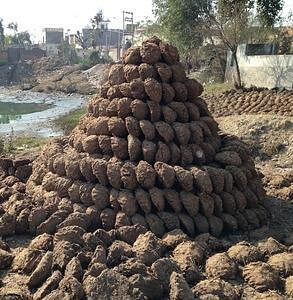
2. Do you know anyone who collects dry wood or leaves to be used for lighting?
Ans. Yes, I know a few people living in my village who collect dry wood or leaves for fuel.
3. Who cooks food in your family? What about other families in your area?
Ans. My mother cooks food for my family. In other families, in my area, the ladies or servants cook food.
4. If they cook food using wood or upla, what difficulties do they face due to smoke?
Ans. People who cook food using wood or upla may suffer from problems like coughing, nausea, headache, and lung diseases.
5. Can Durga use anything else instead of wood. Why not?
Ans. Since Durga is poor, she is unable to use anything else instead of wood.
Change in Fuel Use Over Twenty Years
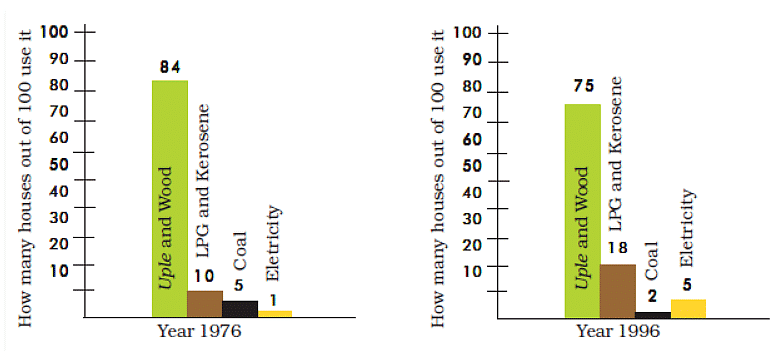
1. In the year 1976, out of 100 how many houses used upla and wood?
Ans. In 84 houses.
2. Which was the fuel used the least in 1976?
Ans. Electricity.
3. In 1976, LPG and Kerosene were used in ______houses and in 1996 this increased to _____. This means that in twenty years their use increased by _____.
Ans. In 1976, LPG and kerosene were used in 10 houses and in 1996, this increased to 18. This means that in twenty years, their use increased by 80%.
4. Out of 100 how many houses were using electricity in 1996?
Ans. In 75 houses.
5. Which fuel was used the least in 1996? In 1976, it was used in what per cent of houses?
Ans. Coal was used the least in 1996. In 1976 was used in 5% of houses.
Find Out from your elders
1. When they were young what was then used to cook food at home?
Ans. When they were young, coal, wood, upla were used to cook food at home.
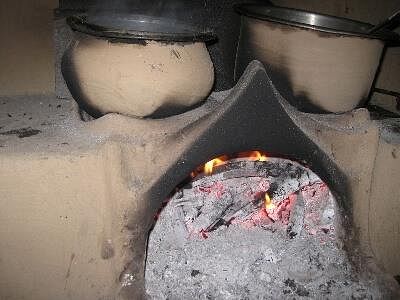
2. In the past 10 years use of which cooking fuel has increased in your area? Use of which fuel has decreased?
Ans. In the past 10 years, the use of electricity and LPG has increased while the use of wood, upla, coal, etc. has decreased.
3. Guess the use of which fuel increases and which would decrease in the next 10 years?
Ans. I guess in the next 10 years, the use of electricity and LPG would increase while that of wood, coal and upla will decrease.
What We Have Learnt
1. Imagine that a company has given you a chance to design a new vehicle like a minibus. What kind of vehicle would you design? Write about it. Draw a picture and colour it.
Ans. I will design a bus which is environment-friendly, highly fuel efficient and especially designed keeping in view the need of handicapped, children and elder people.
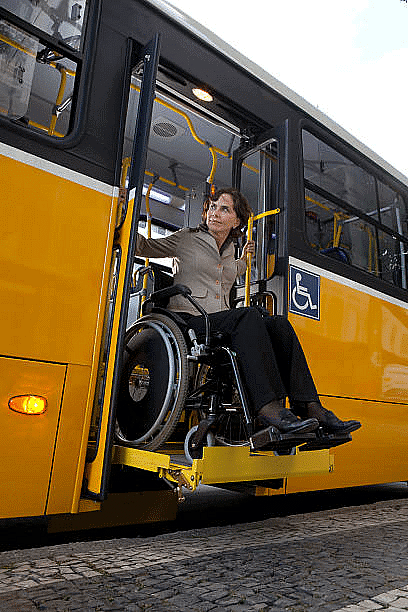
2. While making designs, what did you plan to take care of:
Ans. Old people: Low floor, a special arrangement of seats near the doors.
Children: Low floor, closed door
Those who cannot see? Low floor, closed door and special arrangement of seats near the doors.
3. Make a poster with a message on saving fuel. Write a slogan too.
Ans.
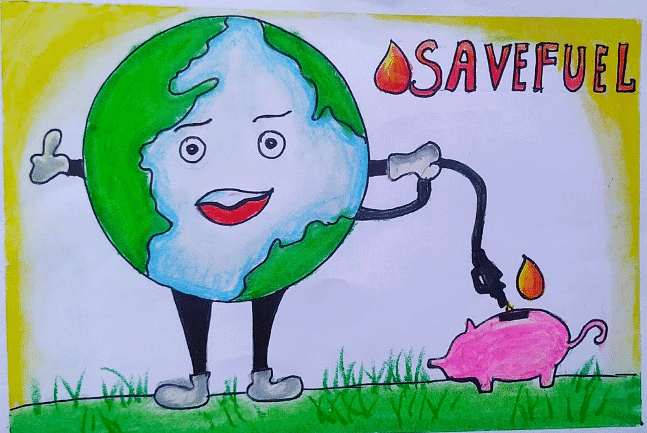
|
35 videos|238 docs|41 tests
|
FAQs on NCERT Solutions for Class 5 EVS Chapter 12 - What if it Finishes?
| 1. What is the article about? |  |
| 2. Why is it important to discuss the change in fuel use? |  |
| 3. How has fuel use changed over the past twenty years? |  |
| 4. What are the consequences of excessive fuel use? |  |
| 5. What are some alternative solutions to reduce fuel consumption? |  |

|
Explore Courses for Class 5 exam
|

|

